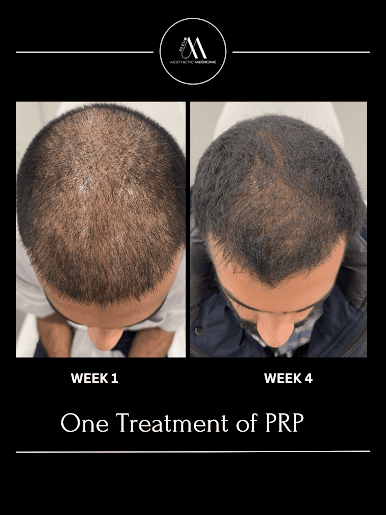Hair loss can be a distressing experience, impacting self-esteem and confidence. For those seeking effective solutions, Platelet-Rich Plasma (PRP) therapy has emerged as a promising option. In this article, we delve into what PRP treatment entails, how it works, its safety profile, and the potential results you can expect.
What is PRP Treatment for Hair Loss? Platelet-Rich Plasma (PRP) therapy is a non-surgical procedure that utilizes the body’s own healing mechanisms to stimulate hair growth. It involves the extraction of a small amount of blood from the patient, which is then processed to isolate platelet-rich plasma. This plasma, rich in growth factors and other bioactive proteins, is injected into the scalp to promote hair follicle rejuvenation and stimulate hair growth.
How Does PRP Work? PRP therapy works through several mechanisms to address hair loss and promote regrowth:
-
Growth Factor Stimulation: Platelets in the PRP contain various growth factors such as platelet-derived growth factor (PDGF), transforming growth factor (TGF), and vascular endothelial growth factor (VEGF). These growth factors promote cell proliferation, angiogenesis (formation of new blood vessels), and tissue regeneration, creating a conducive environment for hair follicle growth.
-
Increased Blood Circulation: By injecting PRP into the scalp, blood circulation to the hair follicles is enhanced. Improved blood flow delivers essential nutrients and oxygen to the follicles, which can revitalize dormant follicles and promote hair growth.
-
Reduction of Inflammation: PRP therapy has anti-inflammatory properties that can help alleviate scalp inflammation, a common factor in hair loss conditions such as alopecia areata and androgenetic alopecia.
Is PRP Treatment Safe? PRP therapy is generally considered safe with minimal risk of adverse effects. Since it utilizes the patient’s own blood, the risk of allergic reactions or transmission of infectious diseases is virtually nonexistent. However, as with any medical procedure, there may be mild side effects such as temporary redness, swelling, or discomfort at the injection site. These typically resolve within a few days.
It’s essential to undergo PRP treatment under the supervision of a qualified healthcare professional experienced in administering the procedure. They can assess your suitability for PRP therapy and ensure proper technique and sterile conditions are maintained during the process.
What Results Can I Expect? Results from PRP treatment for hair loss can vary depending on factors such as the underlying cause of hair loss, the extent of hair thinning, and individual response to the therapy. While some patients may experience noticeable improvement after a single session, others may require multiple treatments spaced several weeks apart to achieve optimal results.
Generally, patients can expect the following outcomes from PRP therapy:
-
Reduced Hair Shedding: PRP treatment can help minimize hair shedding by strengthening existing hair follicles and prolonging the growth phase of the hair cycle.
-
Increased Hair Thickness: Many individuals report an increase in hair thickness and density following PRP therapy. This is attributed to the stimulation of dormant hair follicles and the promotion of new hair growth.
-
Improved Hair Quality: PRP therapy may enhance the overall quality of hair, making it shinier, stronger, and more resilient to damage.
-
Enhanced Scalp Health: The regenerative effects of PRP can improve scalp health by reducing inflammation, promoting circulation, and creating an optimal environment for hair growth.
It’s important to have realistic expectations regarding the results of PRP treatment. While many patients experience significant improvement in hair growth and quality, individual outcomes may vary. Additionally, maintenance treatments may be necessary to sustain the results over the long term.
Conclusion: Platelet-Rich Plasma (PRP) therapy offers a promising solution for individuals suffering from hair loss. By harnessing the body’s natural healing mechanisms, PRP treatment stimulates hair follicle rejuvenation and promotes new hair growth. With its excellent safety profile and potential for noticeable results, PRP therapy has become increasingly popular among those seeking effective non-surgical options for hair restoration. If you’re considering PRP treatment for hair loss, consult with a qualified healthcare provider to determine if it’s the right choice for you.
